Top Famous Indian Classical Instruments
Indian classical music, known for its deep emotional expressiveness and intricate melodies, has been enriched by a wide variety of musical instruments. From the soul-stirring sounds of the sitar to the rhythm-heavy tabla, these instruments are integral to the diverse forms of classical music in India, including Hindustani and Carnatic traditions. In this blog, we’ll explore the top 10 most famous Indian classical instruments, their origins, and how they have shaped the evolution of music in India.
1. Sitar: The King of Indian Classical Music
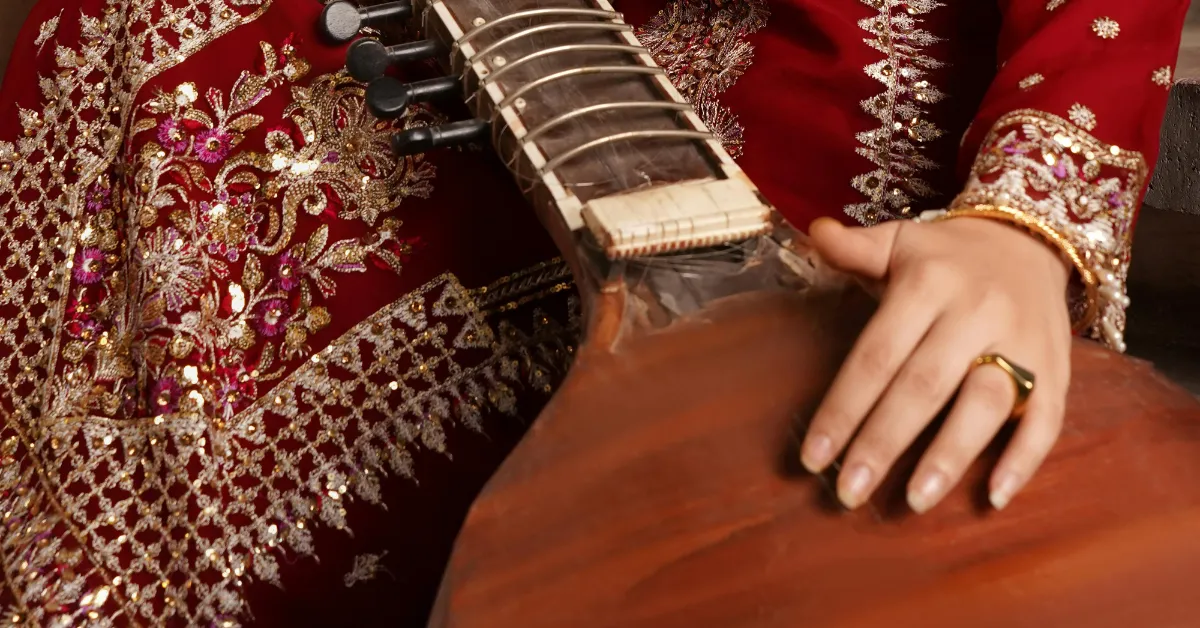
The sitar is arguably the most iconic of Indian classical instruments. Its resonating sound, with its unique drone-like quality, has made it a staple in both classical and contemporary Indian music. The sitar’s distinctive sound comes from its long neck, sympathetic strings, and gourd-shaped resonator.
History:
The sitar’s roots can be traced back to the Persian setar, which was modified and adapted to Indian tastes around the 16th century. It gained immense popularity in the 20th century through the legendary Pandit Ravi Shankar.
Cultural Significance:
The sitar is often the centerpiece of classical Hindustani music and is used in solo performances as well as in accompaniment. It plays a vital role in both devotional and instrumental music, creating emotional depth through its nuanced notes.
2. Tabla: The Heartbeat of Indian Rhythms
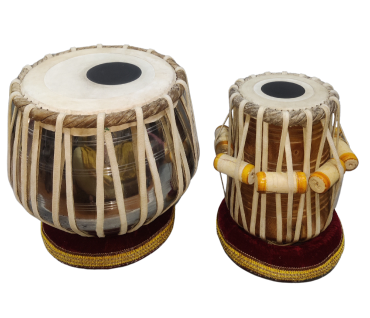
The tabla is one of the most important percussion instruments in Indian classical music. It consists of two hand-played drums of different sizes—one small (dayan) and one large (bayan)—which produce a range of tones that form the rhythmic backbone of Indian classical performances.
History:
The tabla’s origins are a bit ambiguous, but it is believed to have evolved in the 18th century from the pakhawaj drum. Over time, tabla players have refined the instrument to produce complex rhythms (taals) that are fundamental to Indian music.
Cultural Significance:
The tabla is essential in Hindustani music, often accompanying the sitar, flute, or vocal performances. It is known for its intricate rhythms and is celebrated worldwide for its versatility in classical, devotional, and popular music.
3. Veena: The Ancient String Instrument

The veena is one of the oldest string instruments in Indian classical music, used in both Hindustani and Carnatic traditions. Its deep, melodic sound resonates with spiritual and mystical overtones, making it highly revered.
History:
The veena is believed to have ancient origins, with its earliest mentions found in the Rigveda, one of the oldest sacred texts in Hinduism. Various forms of veenas have evolved over centuries, with the Rudra veena and Saraswati veena being prominent in the Carnatic tradition.
Cultural Significance:
In the Carnatic tradition, the veena is often associated with the goddess Saraswati, the deity of music and knowledge. It is played in both solo and ensemble performances, creating intricate and emotive melodic lines.
4. Flute: The Breath of Soul
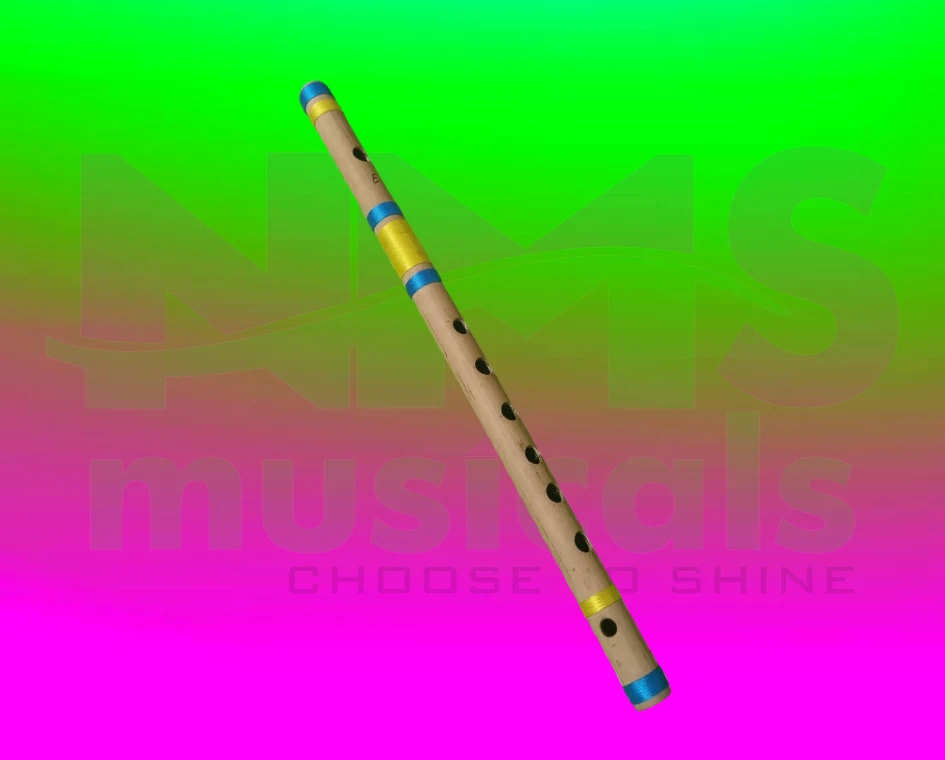
The Indian bamboo flute, known as the bansuri, is a wind instrument made from bamboo. Its soft, airy sound is perfect for expressing the subtleties of ragas, the melodic structures of Indian classical music.
History:
The bansuri has ancient origins in India, and its earliest references can be found in the Rigveda and in stories of Lord Krishna, who is often depicted playing the flute. Over the centuries, the design of the flute has evolved, and it is now used in both traditional and contemporary music.
Cultural Significance:
The flute is an integral part of both Hindustani and Carnatic music. It is particularly known for its role in evoking emotional depth in classical ragas, as well as its meditative and soothing qualities.
5. Mridangam: The Soul of Carnatic Music
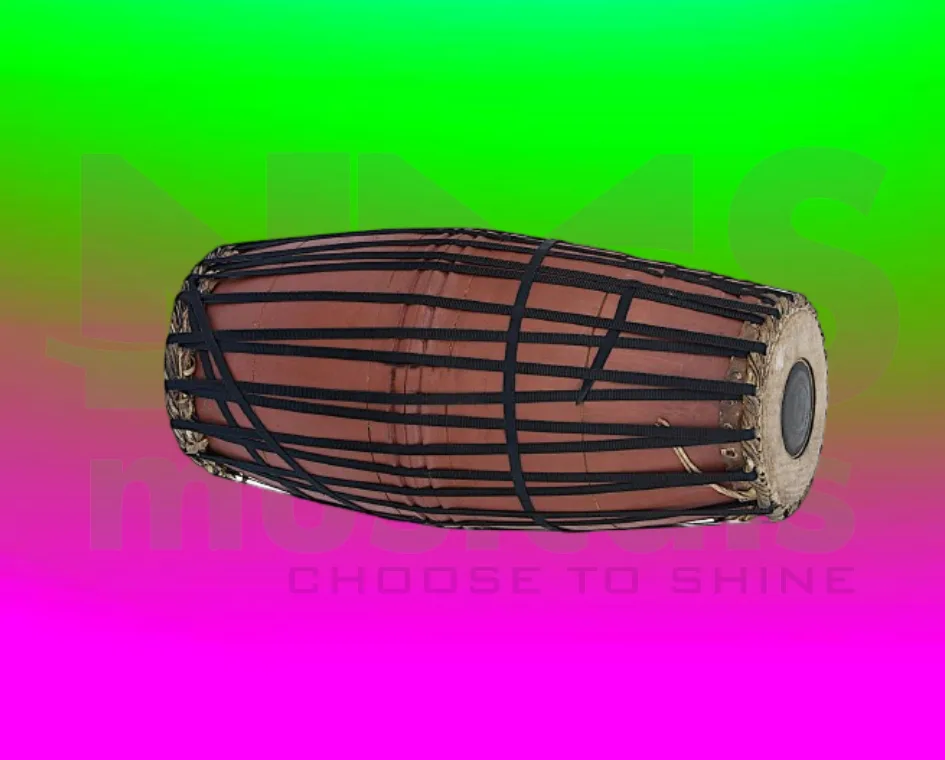
The mridangam is a traditional percussion instrument used in Carnatic music. It is a double-headed drum made from wood, and its complex rhythms are essential for accompanying Carnatic vocal and instrumental performances.
History:
The mridangam’s origins date back over 2000 years to the ancient South Indian civilizations. It has undergone various refinements over the centuries and remains a crucial component of Carnatic music performances
Cultural Significance:
In Carnatic music, the mridangam is considered one of the most important instruments, often forming the rhythm section in ensemble performances. Its deep, resonant sounds add an intricate layer to the music, complementing the melodic instruments.
6. Santoor: The Celestial Sound
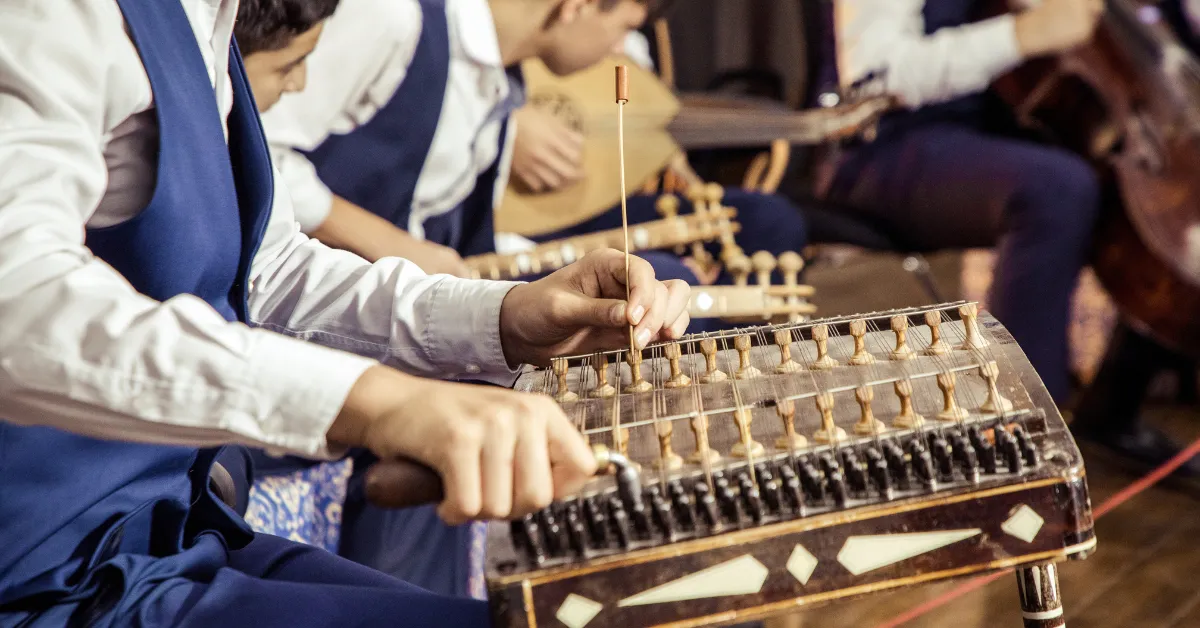
The santoor is a hammered dulcimer from Kashmir that has gained prominence in Hindustani classical music. Played with a pair of lightweight mallets, it produces a gentle, harp-like sound.
History:
The santoor is believed to have been introduced into India from Persia and was adapted to Indian classical music in the 16th century. Over time, the instrument has gained popularity in both classical and fusion genres.
Cultural Significance:
While it is not as widely recognized as the sitar or tabla, the santoor has carved out its niche in classical performances. Its celestial sound is often used to create soothing melodies in ragas.
7. Sarod: The Lute of Hindustani Classical Music

The sarod is a plucked string instrument closely related to the sitar but with a distinct tone. Its sound is often described as deep, intense, and captivating, making it a favorite for Indian classical musicians.
History:
The sarod evolved from the Afghan rubab and was modified in India around the 18th century. It has been a central instrument in Hindustani classical music, especially in the dhrupad and khayal styles.
Cultural Significance:
The sarod is known for its strong, resonant sound and is often paired with tabla in classical performances. It is considered one of the more challenging instruments to master due to its fretless neck and complex techniques.
8. Harmonium: The Portable Keyboard
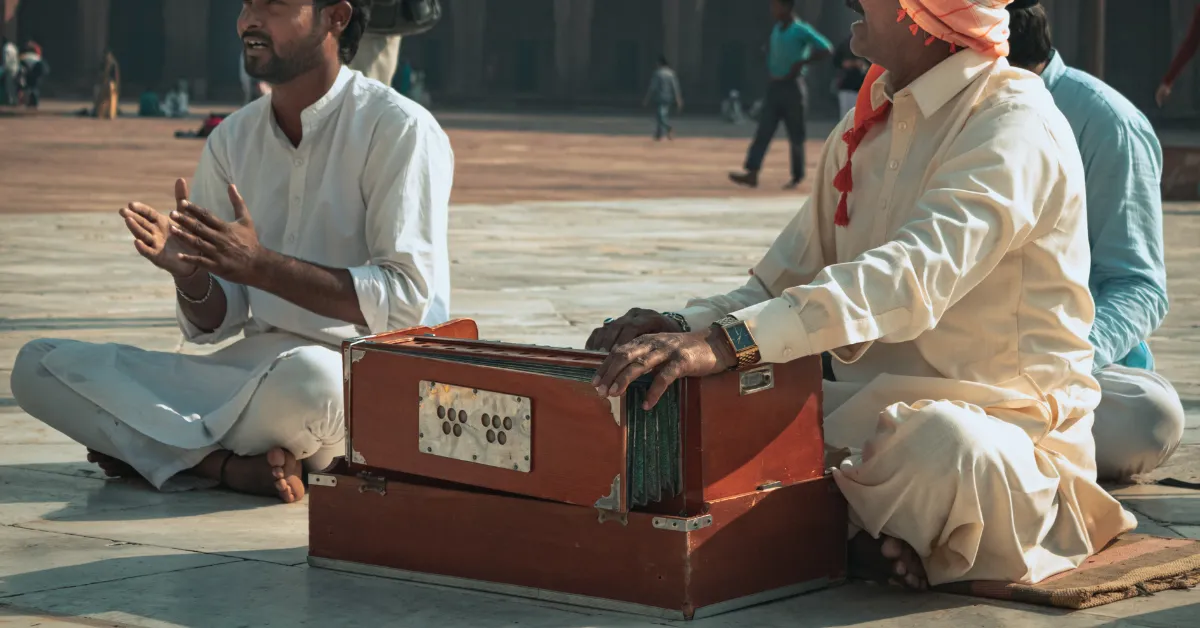
The harmonium is a keyboard instrument used in Indian classical music, primarily in devotional music and the light classical genre. Its small, portable design makes it suitable for both solo performances and group settings.
History:
The harmonium was introduced to India by the British in the 19th century and quickly gained popularity in both the Hindustani and Carnatic traditions. It is now an essential part of many devotional music genres, such as bhajans and qawwalis.
Cultural Significance:
The harmonium is often used to accompany vocal performances in Indian classical music, particularly in the devotional and light classical styles. Its ease of use and rich sound make it ideal for smaller performances.
9. Dilruba: The Melodic Bowed Instrument
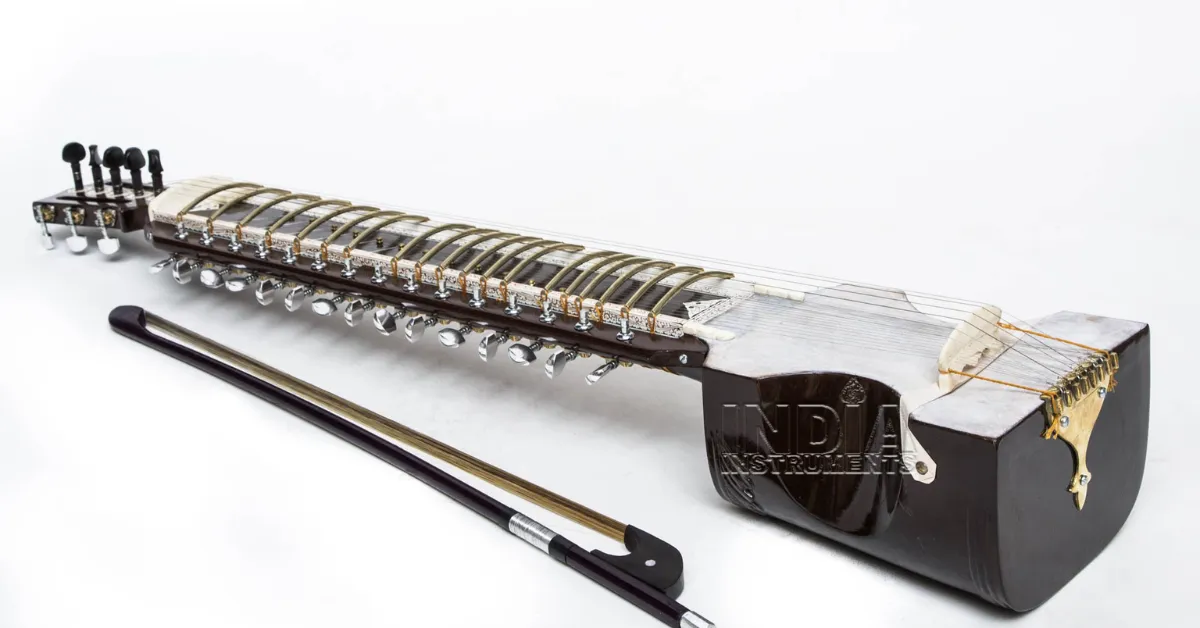
The dilruba is a small, stringed instrument that is similar to the violin but has a more soulful and melodic sound. It is used in both Hindustani classical and folk music.
History:
The dilruba has roots in both Central Asian and Indian musical traditions. It evolved from the rabab and was later refined to suit Indian classical music.
Cultural Significance:
The dilruba’s ability to imitate the human voice makes it particularly effective in conveying the emotional depth of ragas. It is often used in classical performances to add layers of emotion and texture to the music.
10. Pakhawaj: The Ancient Percussion Instrument
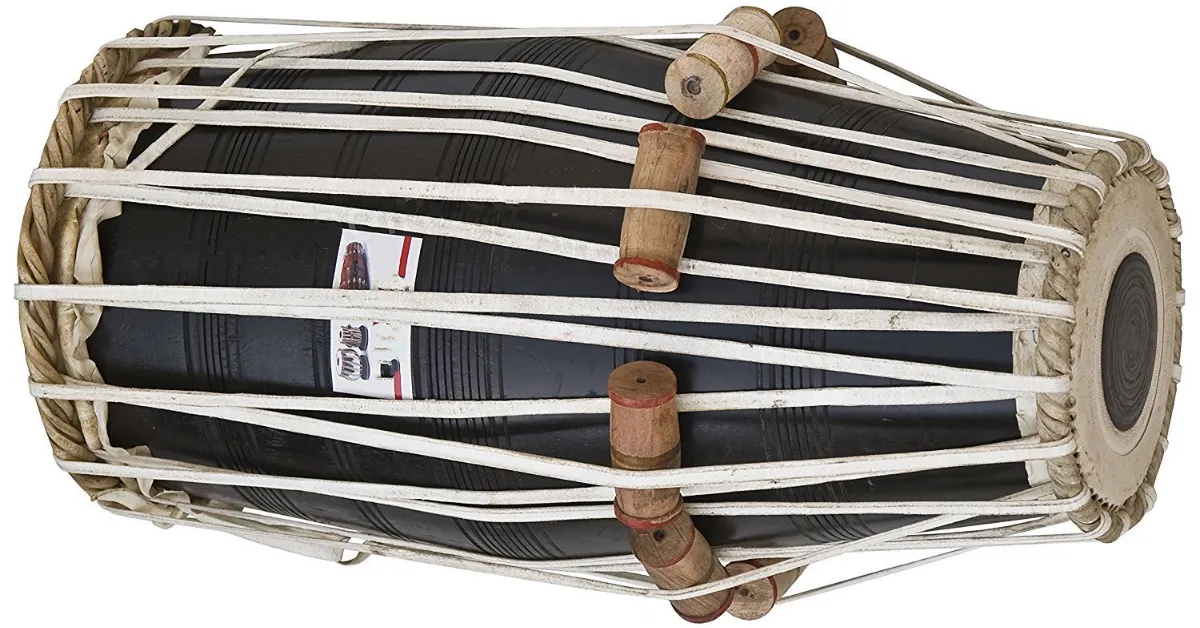
The pakhawaj is a large, double-headed drum that is similar to the tabla but is played in a more traditional way. It is most commonly used in dhrupad and other classical forms of music.
History:
The pakhawaj is one of the oldest percussion instruments in India, with a history that dates back thousands of years. It has evolved over time but retains its traditional role in classical Indian music.
Cultural Significance:
The pakhawaj is a powerful instrument used to provide rhythmic accompaniment in dhrupad performances, a genre of Indian classical music that emphasizes slow, meditative rhythms.
Conclusion
Indian classical music is deeply rooted in a rich cultural heritage, and its instruments are integral to the expressive power of its melodies and rhythms. The top 10 most famous Indian classical instruments mentioned above each have unique histories and characteristics that contribute to the diversity and complexity of Indian music. Whether it’s the soul-stirring sound of the sitar, the rhythmic mastery of the tabla, or the melodic elegance of the veena, these instruments are more than just musical tools—they are the carriers of India’s musical legacy, shaping the cultural fabric of the nation.
At NMS Musicals, we offer a comprehensive range of musical instruments, including percussion, string, wind, and keyboard instruments. Our services encompass sales, expert servicing, and the manufacture of leather instruments. Explore our diverse collection and find the perfect instrument to suit your musical needs.
Visit our website to browse our offerings: nmsmusicals.in
For a closer look at our products, check out our shop page: nmsmusicals.in/shop
Stay connected with us through our social media channels:
- Facebook: https://www.facebook.com/nmsmusicalinstruments/
- Instagram: https://www.instagram.com/nmsmusicals/?hl=en
- YouTube: youtube.com/@nmsmusicals
Our shop locations are:
- Puducherry: 149, Perumal Koil Street, Heritage Town, Puducherry, 605001.
Map Link: https://maps.app.goo.gl/ejDwBBFEJmd3szxk7 - Chennai: No: 1, 1st Floor, Kandigai Street, TVS Nagar, Korattur, Chennai – 600076.
Map Link: https://maps.app.goo.gl/7oXmB6X7KQsqeuuw9
For inquiries, contact/Whatsapp us at 9500663895 or email us at laxman.m89@gmail.com.
Discover the world of musical instruments with NMS Musicals today!
For a visual overview of our percussion instruments, watch the following video:
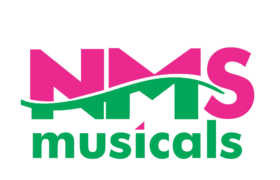

 Cart is empty
Cart is empty 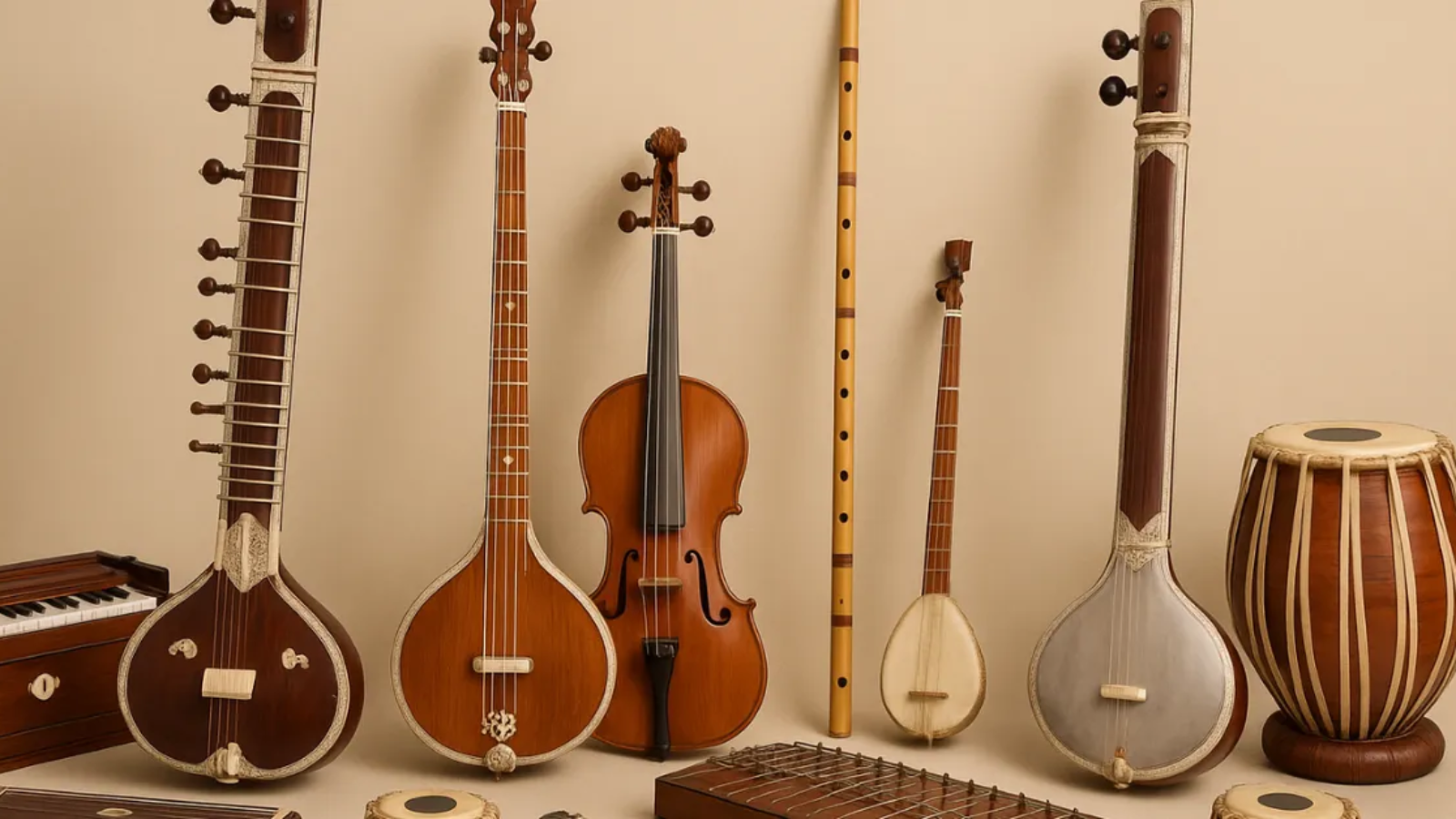
Leave A Comment
You must be logged in to post a comment